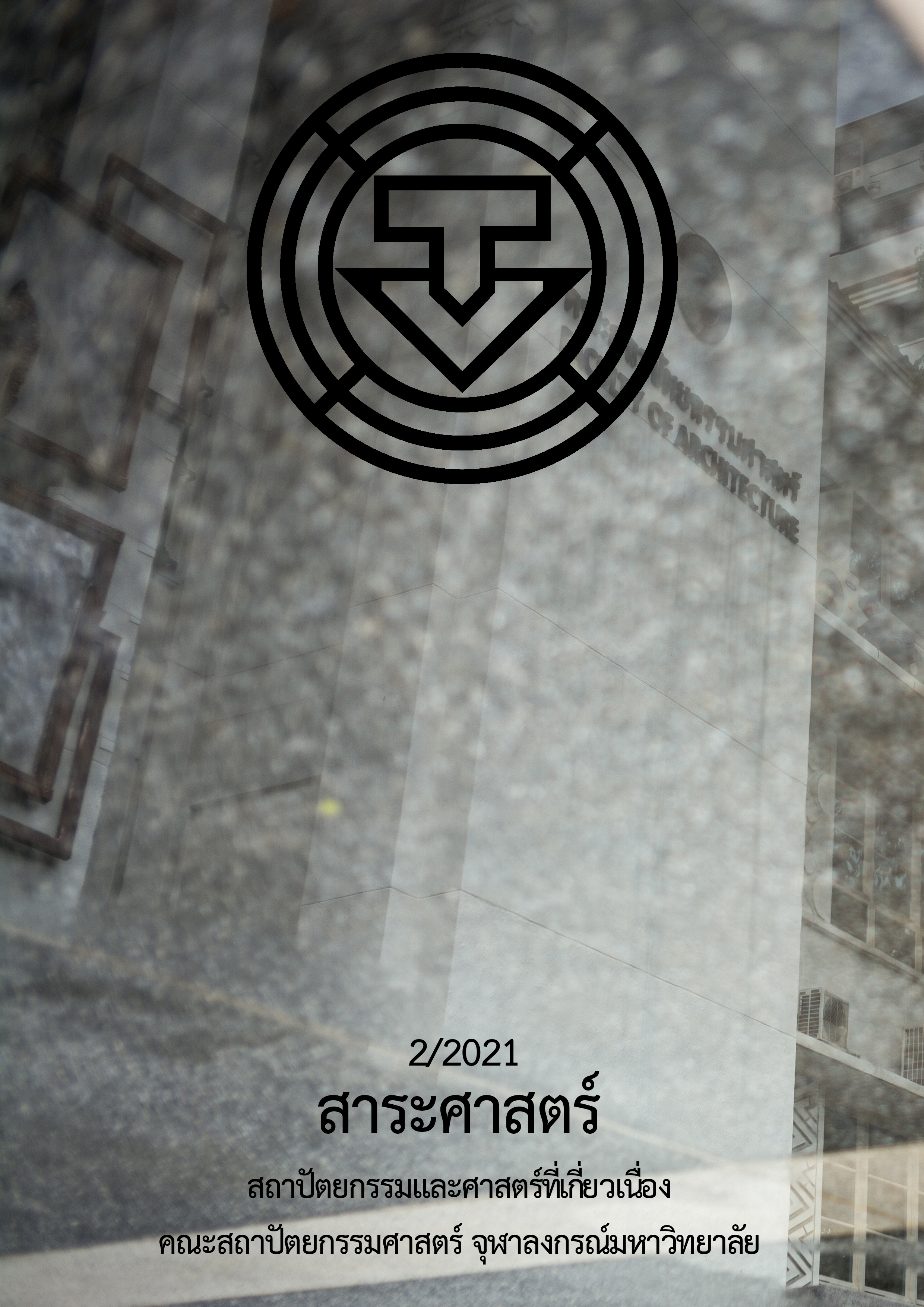The Community Management and Accommodation for Homestay Tourism: A Case Study of Homestay Ban Bung Khae, Nong Saeng Sub-district, Pak Phli District, Nakhon Nayok Province
Main Article Content
Abstract
Homestays in Nakhon Nayok province are pleasant place for tourists’ attraction especially on weekends or holidays because of convenient transportation and its various travel styles. The tourist is able to gain rural culture experiences through homestay tourism with overnight stay. Ban Bung Khae Homestay Group, Nong Saeng Sub-district, Pak Phli District, Nakhon Nayok Province has been organizing a cultural tourism and homestay lifestyle based on the identity of Thai Phuan. They have received the Thai home stay standard and also the outstanding community award in various fields. This research aimed to study the situation of community and accommodation management, investigate a function area under the Thai homestay standards (10 features), sustainable community development guidelines, and explore the tourist needs. The participatory surveys and interviews were employed with the representative 12 homestay leaders of 10 homestay owners. 100 tourists were questioned on their needs.
The results found that most of the homestay was one or two-story by structure was made from concrete and half- timber house. The bedroom for tourist was provided and separated from the owner's room. Maximum accommodate service was found for 20 people/house. The maximum occupancy area was 156 m2 or 7.8 m2/person. Meanwhile, there were some house was able to service for 4 people with accommodate area of 47 m2 or 11.75 m2/person. The homestay function includes bedroom, a private bathroom, a lobby space, a shared bathroom. The common area for activities and dining was provided in the center of the homestay groups. Moreover, the village activity pavilion and a common dining pavilion were set to serve for 50 people and 150 people respectively. For homestay management of Ban Bung Khae group, they applied a principle to solve problems and develop their community as well as the physical aspects with related to overall community context. For example, the house style will be simple on living with harmony of countryside culture, providing activities in the community common areas that is easy to manage and presenting community involvement. The physical community management are the following: main roads, intersections and secondary roads signs, direction signs in the community, maps, pathway, as well as improving the landscape in the community to reflect the cultural identity of the area. These aspects lead the community to develop their physical to archive sustainable homestay tourism onwards.
Article Details
References
กระทรวงการท่องเที่ยวและกีฬา. กรมการท่องเที่ยว. สำนักพัฒนาบริการท่องเที่ยว. (2558). มาตรฐานโฮมสเตย์ไทย. กรุงเทพมหานคร: โรงพิมพ์แห่งจุฬาลงกรณ์มหาวิทยาลัย.
กัสมา กาซ้อน. (2562). การพัฒนาโฮมสเตย์ด้วยนวัตกรรมการจัดการเพื่อความยั่งยืนบ้านปางมะขามป้อม จังหวัดเชียงราย. วารสารวิจัยเพื่อการพัฒนาเชิงพื้นที่, 11(3), 270-290.
กิตติคุณ วงษ์จ้อย. (2561). การบริหารจัดการที่พักนักท่องเที่ยวแบบโฮมสเตย์โดยวิสาหกิจชุมชนบางน้ำผึ้ง. วารสารสาระศาสตร์, 2, 287-298.
ชิตวร ลีละผลิน และ ภัทรชนม์ รัชตะหิรัญ. (2561, กรกฎาคม-ธันวาคม). ปัจจัยสิ่งอำนวยความสะดวกของโฮมสเตย์ที่มีผลต่อความต้องการของนักท่องเที่ยวไทยที่อำเภอเชียงคาน จังหวัดเลย. วารสารการวิจัยการบริหารการพัฒนา, 8(2), 1-12.
เนติวัฒน์ แก้วเทพ. (2561, มกราคม-มิถุนายน). การเปลี่ยนแปลงเรือนพื้นถิ่นลาหู่เพื่อการท่องเที่ยวแบบโฮมสเตย์ในอำเภอเมืองและอำเภอแม่ฟ้าหลวง จังหวัดเชียงราย. วารสารสิ่งแวดล้อมสรรค์สร้างวินิจฉัย, 17(1), 23-42.
ประจักร โกษาวัง. (2019). ความสัมพันธ์เชิงสาเหตุของปัจจัยสำคัญกับความภักดีเชิงพฤติกรรมของนักท่องเที่ยวชาวไทยต่อการท่องเที่ยวโฮมสเตย์ในเขตภาคเหนือตอนบนของประเทศไทย. Journal of Modern Management Science, 12(1), 34-50.
เพลินพรรณ โชติพงษ์. (2560, มกราคม-มิถุนายน). ส่วนประสมทางการตลาดและกระบวนการตัดสินใจใช้บริการโฮมสเตย์ของนักท่องเที่ยวในกรุงเทพมหานครและปริมณฑล. วารสารวิชาการการตลาดและการจัดการ มหาวิทยาลัยเทคโนโลยีราชมงคลธัญบุรี, 4(1), 105-119.
มนตรี เกิดมีมูล. (2561, พฤษภาคม-สิงหาคม). ปัจจัยที่มีผลต่อการเข้าพักที่โฮมสเตย์ในประเทศไทยของนักท่องเที่ยวชาวต่างชาติ: กรณีศึกษา โฮมสเตย์ในเขตพื้นที่ภาคใต้. วารสารวิจัยรำไพพรรณี, 12(2), 110-120.
มณีรัตน์ สุขเกษม และ พิทักษ์ ศิริวงศ์. (2560, กรกฎาคม-ธันวาคม). การดำรงอัตลักษณ์ชาวไทยพวนของบ้านดงโฮมสเตย์ผ่านบริบทการท่องเที่ยวเชิงสร้างสรรค์อย่างยั่งยืน. วารสารสถาบันวัฒนธรรมและศิลปะ, 19(1), 92-102.
ระชานนท์ ทวีผล. (2562, เมษายน-มิถุนายน). แนวทางการจัดการอัตลักษณ์โฮมสเตย์ไทย กรณีศึกษาจังหวัดเพชรบุรีและจังหวัดประจวบคีรีขันธ์. วารสารวิจัยและพัฒนา มหาวิทยาลัยราชภัฏเลย, 14(48), 22-33.
รินรดา กุลีช่วย และ ปริญญา บรรจงมณี. (2561, พฤษภาคม-สิงหาคม). ความคาดหวังและการรับรู้ของนักท่องเที่ยวต่อมาตรฐานการจัดการที่พักแบบโฮมสเตย์ในจังหวัดชุมพร. วารสารวิจัยและพัฒนาวไลยอลงกรณ์ในพระบรมราชูปถัมภ์, 13(2), 276-288.
สุภาภรณ์ ประสงค์ทัน. (2556, มกราคม-ธันวาคม). ทุนทางสังคมกับแนวทางการส่งเสริมการท่องเที่ยวโดยชุมชนเชิงสร้างสรรค์: กรณีศึกษาชาวไทยพวน อ.ปากพลี จ.นครนายก. วารสารสังคมศาสตร์ มหาวิทยาลัยศรีนครินทรวิโรฒ, 16, 225-235.
สุทธดา ขัตติยะ และ ณรงค์ ป้อมหลักทอง. (2019, January-April). ลักษณะการดำเนินงานและรูปแบบของโฮมสเตย์ในจังหวัดเชียงราย. Graduate School Journal, 12(1), 31-43.
สำนักงานคลังจังหวัดนครนายก. (2562). รายงานประมาณการเศรษฐกิจจังหวัดนครนายกปี 2563 และ 2564 (ฉบับที่ 4/2563). นครนายก: สำนักงานจังหวัดนครนายก.
World Tourism Organization. (2013). Sustainable tourism for development. Madrid: World Tourism Organization (UNWTO).


